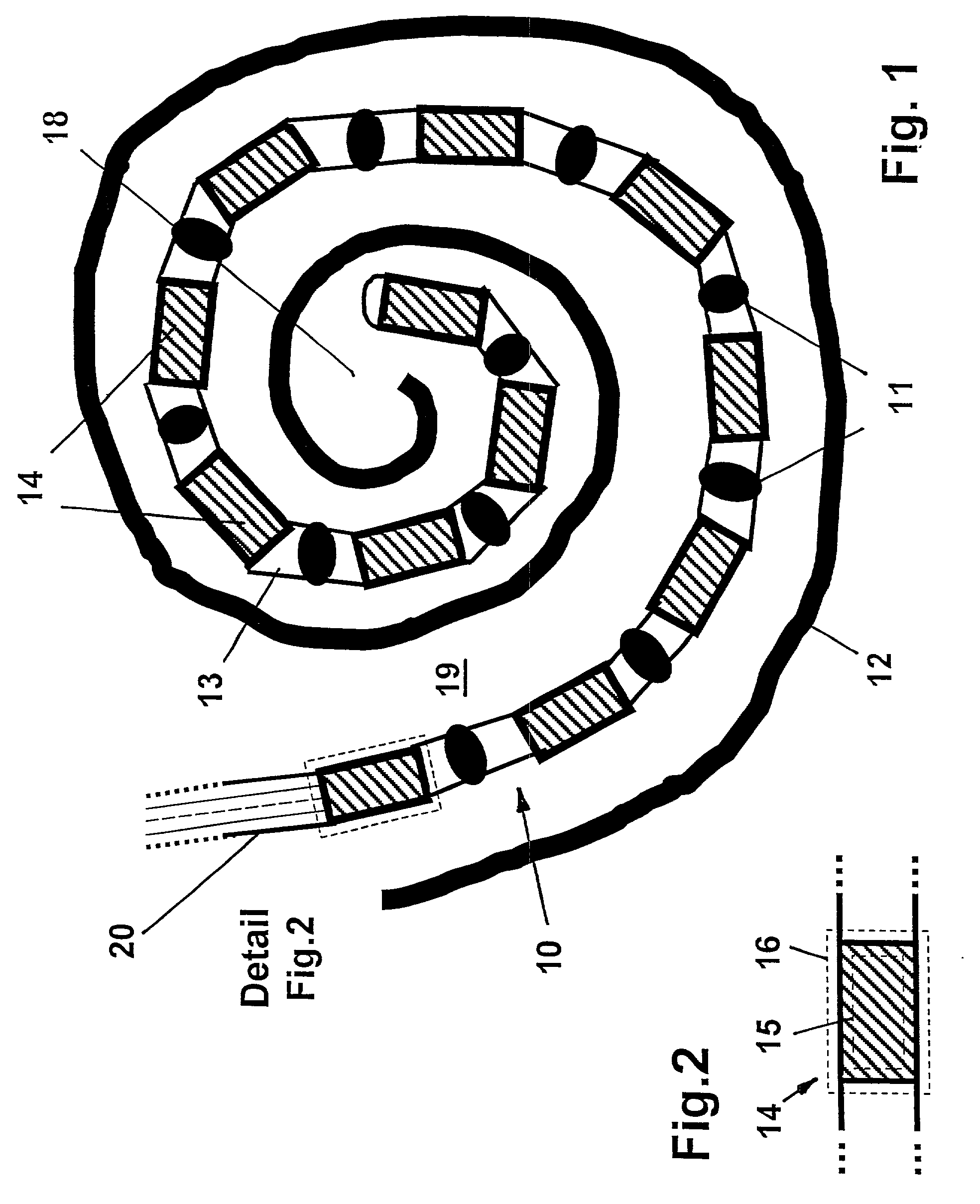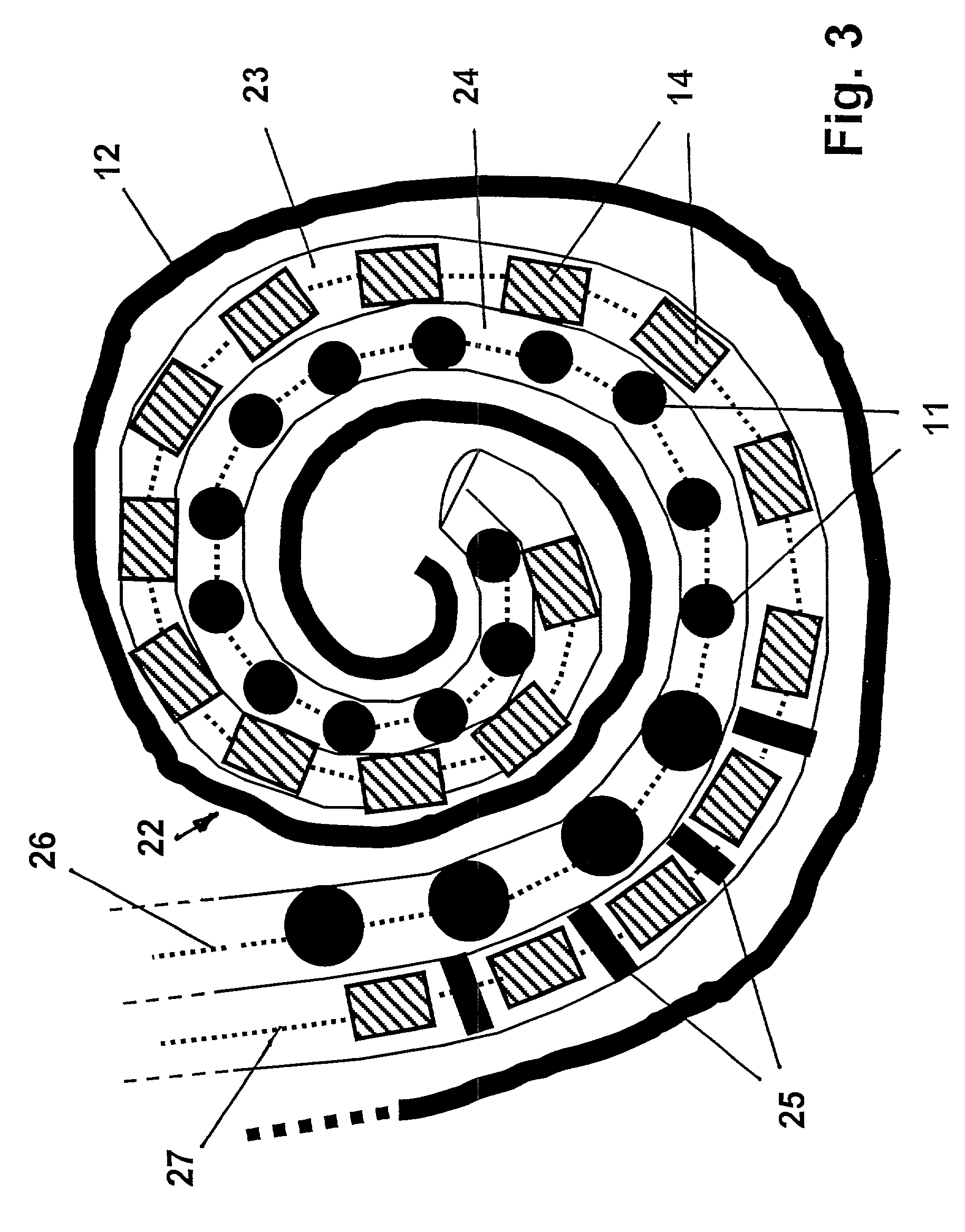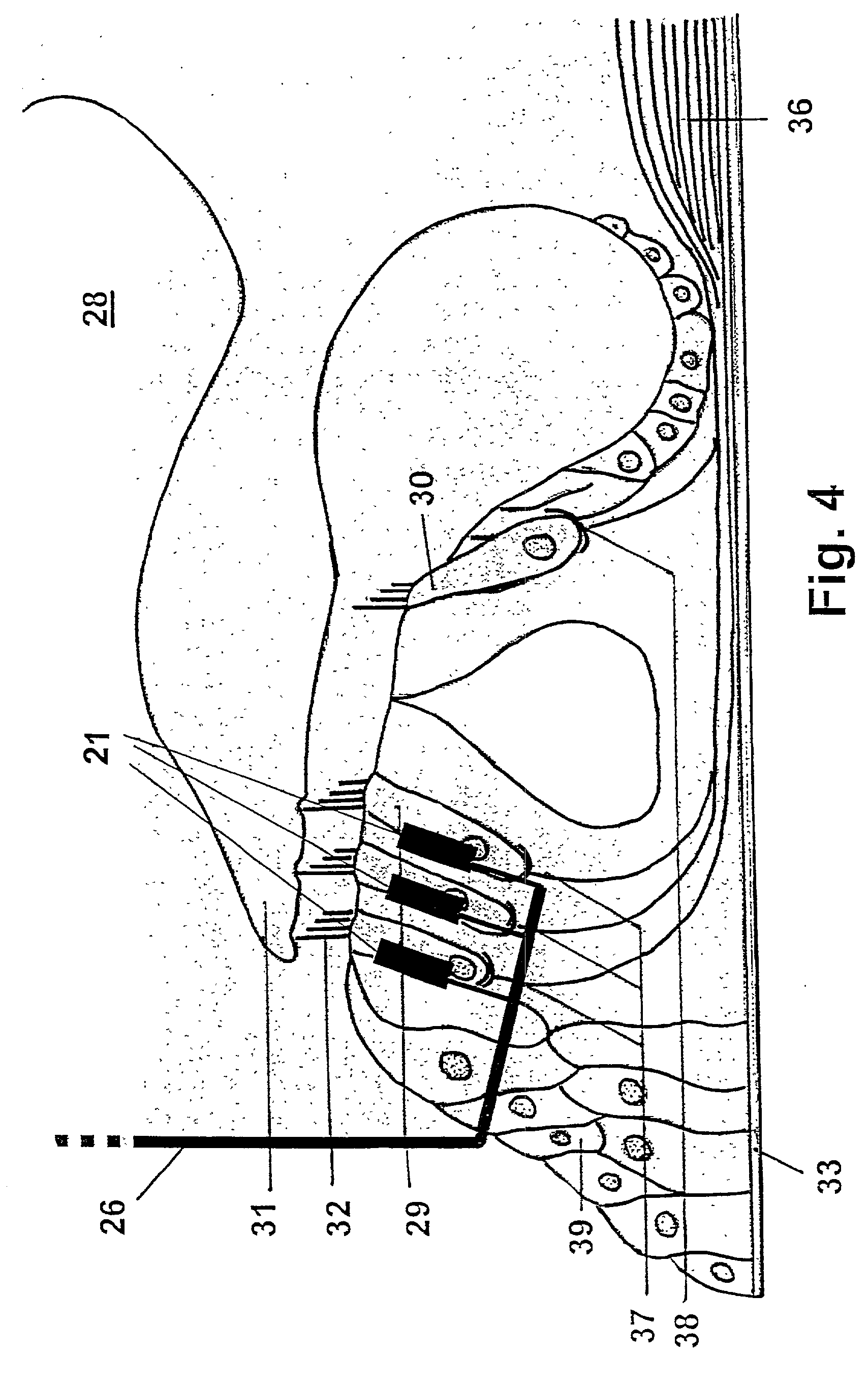At least partially implantable system for rehabilitation of hearing disorder
a technology of implantable systems and hearing disorders, applied in external electrodes, sensors, artificial respiration, etc., can solve the problems of increased hearing threshold, inability to surgically correct, and inability to cure, so as to prolong and prolong service life and increase residence time
- Summary
- Abstract
- Description
- Claims
- Application Information
AI Technical Summary
Benefits of technology
Problems solved by technology
Method used
Image
Examples
Embodiment Construction
[0085] FIG. 1 schematically shows an intracochlear dual stimulation array 10 with several cochlear implant electrodes 11 for direct electrical stimulation of the inner ear and several intracochlear electromechanical converters 14 for direct mechanical stimulation of the inner ear in a common mechanical carrier 13. Basically this array is built similarly to a multichannel intracochlear cochlear implant electrode array. The carrier 13 preferably comprises essentially a flexible silicone molded part of preferably circular cross section. The molded part is pushed through the oval window, the round window or an artificial opening of the cochlea 12 or into the fluid-filled inner ear spaces. The electromechanical converters 14 are shown schematically in FIG. 1 as cylindrical elements with likewise circular cross section. Within the carrier 13 there are electrical feeder lines to the cochlear implant electrodes 11 and converters 14; these feeder lines are not shown in detail.
[0086] The elec...
PUM
 Login to View More
Login to View More Abstract
Description
Claims
Application Information
 Login to View More
Login to View More - R&D
- Intellectual Property
- Life Sciences
- Materials
- Tech Scout
- Unparalleled Data Quality
- Higher Quality Content
- 60% Fewer Hallucinations
Browse by: Latest US Patents, China's latest patents, Technical Efficacy Thesaurus, Application Domain, Technology Topic, Popular Technical Reports.
© 2025 PatSnap. All rights reserved.Legal|Privacy policy|Modern Slavery Act Transparency Statement|Sitemap|About US| Contact US: help@patsnap.com



